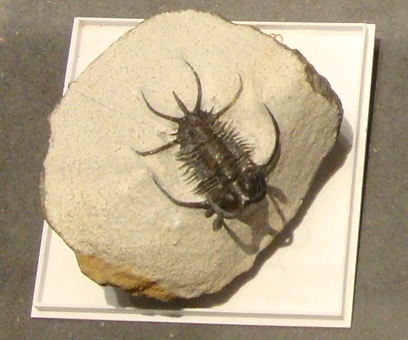Fossils are preserved in many ways. The simplest is the intact preservation of the hard parts of an animal or a plant. Wood, bone, teeth, and other hard parts are preserved intact for relatively short periods.
In another type of fossilisation, buried plant or animal materials, decompose, leaving a residual film of carbon behind. This mark the form of a leaf or of some simple animal.
Sometime buried material is gradually replaced by silica or calcite, dolomite or pyrite, from solutions which permeate the rock in a process called petrifaction. These replacements form another very common type of fossil.
The most spectacular of all replacements is that of wood by agate or opal as a result of the action of hot, silica-bearing waters.This form petrified wood.
Moulds and casts are very common fossil forms and they are impressions.
A footprint of a dinosaur is a good example of a mould.
When shells are buried in sand or mud, a mould of the outer surface of the shell is formed. The water may dissolve the shell material completely, and the mould will be the fossil record. Later, percolating waters may refill the cavity with calcium carbonate or silica, forming a cast.
And all these fossils, fossil corals, fossilised wood , and most important a
Mosasaurus hoffmannii , you can see in
NHM Maastricht .
The first Mosasaurus has been found in 1770 .
More interesting information Here .



























